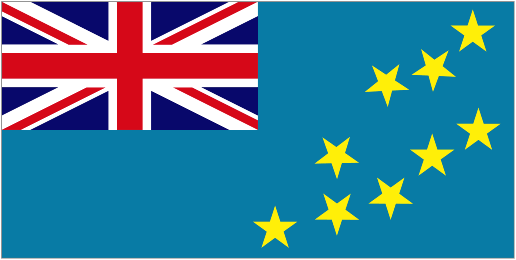Backpacking in Tuvalu
Approaching Tuvalu from the skies through Air Pacific, Tuvalu is an illusion of other-worldy desolation and beauty. The territory is one of the smallest in the world, but size never kept it from becoming an absolute tropical paradise. Despite all the azure waters surrounding Tuvalu, shortage of drinking water may present a slight issue. It is undeveloped, but this somehow is an advantage.
Tuvalu translates to “group of eight” which refers to the country’s eight traditionally inhabited islands that formed part of the Gilbert and Ellice Islands. On the other hand, formerly Ellice Islands, Tuvalu has nine small but terribly stunning islands and lagoons ideal for snorkeling and swimming. In the end, the capital Funafuti is spelled with “fun”.
GEOGRAPHY
Tuvalu (8 00 S, 178 00 E) is one of the smallest territories in the world with a total area of 26 km2 of six scattered low-lying coral atolls and three reef islands. The islands are Funafuti, Nanumea, Nui, Vaitupu, Nukufetau, Nukulaelae, Nanumaya, Niutao, and Niulakita. Tuvalu is one of the most undeveloped territories in the world with a severe shortage of drinking water. Still, Tuvalu is very rich in fish. The highest point of Tuvalu is just 5 m above sea level.
CLIMATE
As with most Pacific islands, Tuvalu is hot and humid, with little seasonal variation. The climate is tropical with an annual temperature of 30°C (86°F), similarly, with small variation. The wet season is experienced from November to February. Then the sun turns up as a good friend from March to October, all the while, the islands remain cool. Tropical storms are rare but the islands’ low-lying nature makes them vulnerable to changes in sea levels.
PEOPLE
Tuvalu has a population of 10,619 (July 2012 est.) of primarily Polynesian origin, with only a small percentage of 4% thereabouts of Micronesian ethnicity. The inhabitants of the islands are called Tuvaluans. Tuvaluans have access to seasonal employment in some industries in New Zealand, such as horticulture and vitriculture.
LANGUAGE
The TUVALUAN language is the officially spoken by virtually all the inhabitants of the Island, including official functions and Parliament. ENGLISH is also used officially, although sparingly and not in daily use. In Nui, a language exceptionally similar to GIBRALTESE or KIRIBATI is spoken. SAMOAN is also spoken by a few Tuvaluans.
RELIGION
The Tuvaluans are predominantly Christians. When Christianity was introduced, pagan worship of ancestral spirits and deities was put to an end. Nowadays, although more than 90% of the Tuvaluans are members of the Church of Tuvalu, a Protestant Christian church, ancestral worship remains a part of the religious equation. Also practiced in the islands are Seventh-Day Adventist, Baha’i, and Islam (Ahmadiyya Muslim Community).
ATTRACTIONS
Under the hot Tuvaluan sun, time seems to stop, while life takes a refreshing lurch forwards bliss and relaxation. Blame it on the undeveloped, untouched constitution of the island – the long coasts, the deep, endless blue stretched out in the horizon, or the saline whiff off the ocean. Water everywhere, and yet Tuvalu suffers extreme water shortage, like Tokelau.
A slow and steady course towards progress, Funafuti, the capital is well on its way, rendering simple conveniences as an airstrip, the Funafuti International Airport, as well as cars in Fongafale, at the same time, still abounding with nature allures like the Funafuti Lagoon and reefs in the Funafuti Conservation Area, which is home to various fish, turtles, and sea birds.
Quite alike Tokelau, there is little opportunity for sightseeing on land as it is small, but under the sea is a different story. One can dive into sea, into heaps stamps at the Philatelic Bureau, which provides stamps to collectors the world over, into books at the University of the South Pacific Centre, or into the ground playing kilikiti (local version of cricket) or tea no (reminiscent of volleyball).
FOOD
The Tuvaluan cuisine is based on a subsistence lifestyle, utilizing what the land, or in this case, the sea provides. Food around the islands is based on fish and, the staple, coconut. Coconut is ubiquitous in the Tuvaluan gastronomy that it is a vital ingredient in desserts, replacing what would typically call for cow’s milk.
Main dishes are also infused with coconut milk such as coconut crab, coconut fish, and coconut turtle, if you have the stomach for it. Grilled fish and meats are also all the rage here in the South Pacific islands of Tuvalu. Traditional foods eaten include bananas, breadfruit, seafood, pulaka (a swamp taro), and sea birds too. Pork is eaten mostly at fatales (parties) and beer is imported.
***





